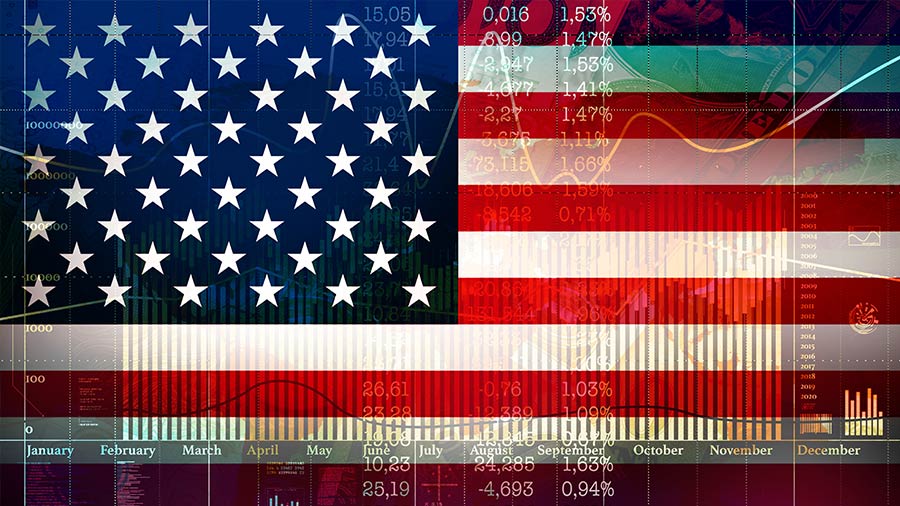Personal Wealth Management / Market Analysis
Digging Into Eurozone GDP
Last week’s report confirmed what stocks already knew.
According to last week’s flash estimates, eurozone GDP eked out 0.1% quarter-over-quarter growth in Q2—slightly topping expectations.[i] Not gangbusters, and a bit slower than headline readings elsewhere across the developed world. But a look under the hood shows that, while some long-running issues persisted, there were several pockets of strength or resilience. In concert, we think last Wednesday’s report confirmed what stocks already knew—the eurozone is holding up better than many feared entering 2025.
Domestic demand drove much of Q2’s growth. Take the Iberian Peninsula, where Spain and Portugal led the way, growing 0.7% q/q and 0.6%, respectively.[ii] On an annualized basis, Spain’s growth rate matched America’s trade-skewed 3.0% headline figure, while Portugal’s 2.4% was just behind.[iii] Per both statistics agencies’ press releases, robust domestic demand (i.e., private consumption, household spending) and investment drove growth.[iv] Similarly, France’s 0.3% q/q rise saw household consumption tick up while imports and inventories jumped, potentially reflecting companies’ stocking up in anticipation of continued spending.[v]
These are notable positives, cutting against much of the negativity hanging over the currency bloc this year. At Q2’s start, pundits posited US tariffs’ crushing exports and the tourism season’s winding down would stunt eurozone growth. While we always found these fears a bit overrated, the latest figures suggest growth can come from within, likely quelling the former somewhat. Plus, a steepening yield curve—alongside falling political and tariff uncertainty and gridlocked governments across the bloc—should support domestic business investment, another tailwind.
Conversely, Irish GDP fell -1.0% q/q in Q2, dragging most on overall results—but take these data with many grains of salt.[vi] The Ireland Central Statistics Office’s press release noted “the result was mainly driven by a fall in the multinational dominated Industry sector in Q2 2025.”[vii] Some context: Tons of multinational enterprises (MNEs) call Ireland home for tax purposes, giving them outsized influence over Irish GDP. But this doesn’t really reflect domestic economic activity as much as it does, say, pharmaceutical trade with the US. Hence, analysts and policymakers rarely emphasize Irish GDP—opting instead for a bespoke statistic called Modified Domestic Demand (MDD), which strips out MNEs’ effects. However, this stat won’t come out until September’s Quarterly National Accounts release.
GDP and MDD can differ greatly, which could be at play here. In Q1, Irish GDP grew a whopping 7.4% q/q while MDD grew just 0.8%.[viii] Irish multinationals—particularly Pharmaceuticals—saw exports explode as American businesses sought to front-run tariffs, boosting GDP. So, on a quarter-over-quarter basis, it is possible Ireland’s GDP drop is masking a healthier domestic economy. Monthly data hint at just that: Irish retail sales volumes grew in April, May and June on a month-over-month basis.[ix] S&P Global’s Irish manufacturing gauge topped 50—indicating expansion—all quarter and into July.[x] Industrial production did, too.
While we can’t know yet, this is fairly strong evidence growth is better than GDP implies. Beyond this, there have been many questions around how potential pharmaceutical tariffs would affect the Irish economy, but that is less of a domestic economic issue than it is usually portrayed. The bulk of those companies aren’t homegrown, and it isn’t as though demand would suddenly fall to zero.
Elsewhere, Germany and Italy were the only other detractors, both dipping -0.1% q/q. But little here presents a negative surprise. Most weakness derived from German manufacturing and Italian agriculture—neither new nor shocking.[xi] Notably, though, both countries reported positive domestic demand trends.[xii] Now, tariffs could have pulled demand into Q1, leaving a pothole in Q2. But then again, Germany’s result extends the streak of alternating growth and contraction that began way back in Q2 2022.[xiii] Italian agriculture has followed a similar pattern in recent quarters, too, and it is a narrow industry with little footprint in markets. Either way, this is just more of the same. It is nothing new for stocks, which pre-priced all this eons ago … and moved on.
Thus, last week’s report seemingly confirmed what we think eurozone stocks have already shown this year: a better-than-feared economic reality. Worries around national debt and unstable politics have long dragged on eurozone sentiment, to say nothing of tariff worries. But with inflation back at prepandemic averages and domestic demand and investment humming, things look much better than many anticipated at 2025’s start. We think this is a major reason eurozone stocks have outperformed global stocks this year.[xiv]
Other factors are signaling growth, too. See yield curves across the eurozone’s biggest economies, where German, French and Italian short rates all sit well below long rates. These curves steepened dramatically in recent months. Banks borrow short term to fund long-term loans, so this steepening promotes bank lending—key to growth, especially in loan-reliant Europe—through greater profitability.[xv] This is already showing up in the data, as eurozone commercial and industrial (C&I) loan demand picked up in Q2 while credit standards remained mostly unchanged.[xvi] And loan growth to households and non-financial corporate borrowers has been trending up from almost flat a year ago to 2.2% y/y now—not gangbusters, but a noteworthy improvement.[xvii] The steeper curve seems likely to lend (sorry) itself to further eurozone loan growth from here, which is already rising toward prepandemic norms.
Yes, the eurozone economy still has problems. Long-running fears like French or Italian debt and Germany’s “sick man” moniker remain, but we think they are old news, faulty and pre-priced into markets ages ago. If they presented substantial risk in the here and now, we doubt eurozone stocks would be leading.
And while headline eurozone growth is tracking below the US (outside maybe Spain), Q2’s import plunge is skewing the latter, as we covered last week. The simple truth is tariffs tend to hurt the imposer more than their target, making them—and a flatter yield curve—relative headwinds for America. But across the Atlantic, the eurozone’s fundamentals are stronger than appreciated these days, which last week’s release helped confirm.
[i] Source: Eurostat, as of 8/1/2025.
[ii] Source: FactSet, as of 8/5/2025.
[iii] Ibid.
[iv] Source: Spain Statistics Office, Statistics Portugal, as of 8/1/2025.
[v] Source: Insee, as of 8/1/2025.
[vi] Source: Ireland Central Statistics Office, as of 8/1/2025.
[vii] Ibid.
[viii] Ibid.
[ix] Ibid.
[x] Source: S&P Global, as of 8/1/2025.
[xi] Source: Destatis and Istat, as of 8/1/2025.
[xii] Ibid.
[xiii] Ibid.
[xiv] Source: FactSet, as of 8/1/2025. MSCI EMU and World Index returns with net dividends, 12/31/2024 – 8/1/2025.
[xv] Source: FactSet, as of 8/1/2025.
[xvi] Source: European Central Bank, as of 8/1/2025.
[xvii] Ibid.
If you would like to contact the editors responsible for this article, please message MarketMinder directly.
*The content contained in this article represents only the opinions and viewpoints of the Fisher Investments editorial staff.
Get a weekly roundup of our market insights
Sign up for our weekly e-mail newsletter.

See Our Investment Guides
The world of investing can seem like a giant maze. Fisher Investments has developed several informational and educational guides tackling a variety of investing topics.





